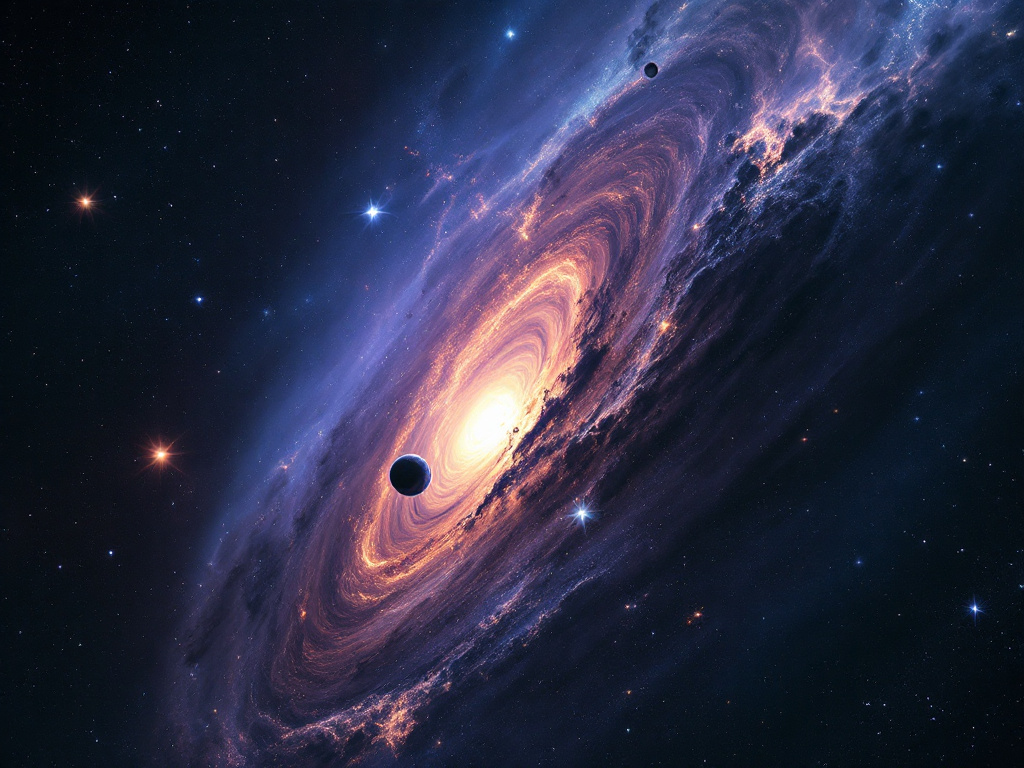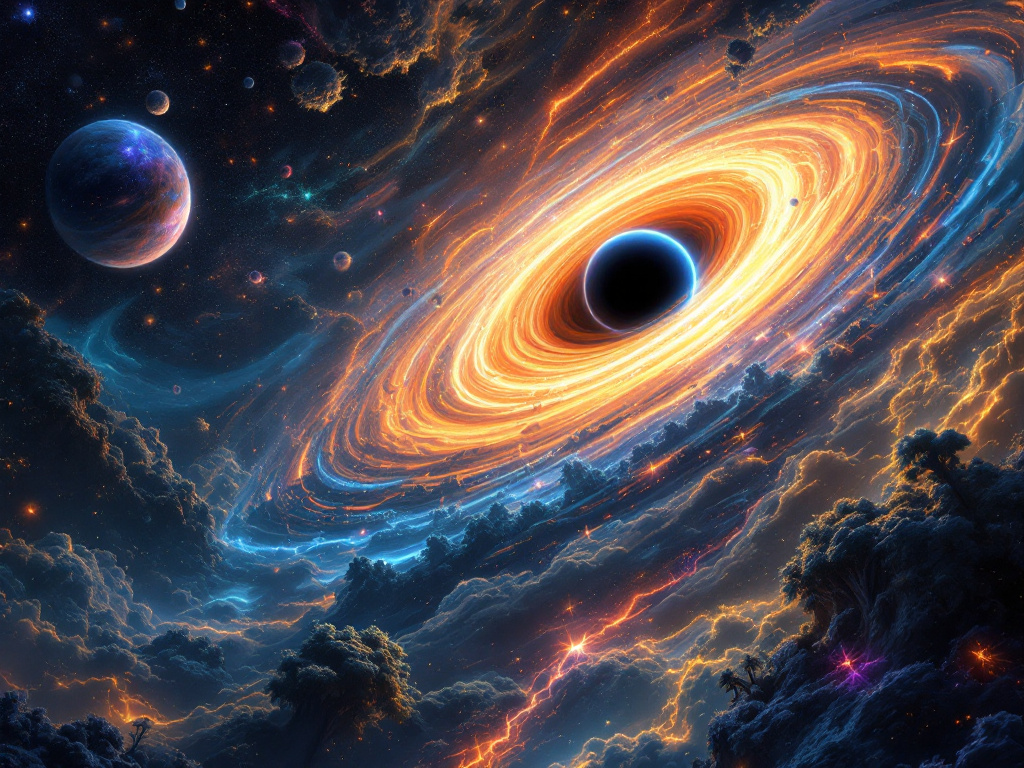The idea of a planet orbiting a black hole sounds like something out of a science fiction novel, but modern science offers fascinating insights into its plausibility. If a planet were at a safe distance, far from the destructive pull of the event horizon, could it receive enough energy to sustain life? In this article, we explore the theoretical foundations and scientific data that could make such a scenario possible.
1. Orbital Stability Around a Black Hole
Could a planet maintain a stable orbit around a black hole? The answer depends on its distance and the surrounding gravitational influences.Black holes, if devoid of an active accretion disk, behave like any other massive celestial body, allowing a planet to theoretically sustain a stable orbit, much like Earth around the Sun.
If a black hole has an active accretion disk, the radiation could make the region highly inhospitable, though it wouldn't completely rule out the presence of habitable zones.
2. Energy Sources for Life
Light is essential for life as we know it, and a black hole does not emit its own light. However, there are possible energy sources for a hypothetical planet orbiting a black hole:Radiation from the accretion disk: A black hole actively consuming matter emits vast amounts of radiation, potentially heating the planet and substituting for a star's light.
Hawking radiation: Though negligible for supermassive black holes, in theory, it could contribute at minimal levels.
Gravitational and geothermal energy: Intense tidal forces could generate internal heat, much like Jupiter’s moon Io.
3. Relativistic Effects and Perception of Light
A planet near a black hole would experience significant relativistic effects:Time dilation: Time would pass much more slowly compared to a distant observer.
Gravitational redshift: Incoming light would be altered by the black hole’s immense gravity.
Doppler effect: Light from the accretion disk could be intensified for a fast-orbiting planet.
4. A Habitable Planet in a Binary System with a Black Hole
A more plausible alternative is a binary system where a black hole and a star orbit a common center of mass. Although it is often assumed that the star orbits the black hole, in reality, both objects rotate around a shared gravitational barycenter.A well-known example is Cygnus X-1, a binary system where a black hole of about 14-21 solar masses and a blue supergiant star of around 40 solar masses orbit each other. In such a system, a planet could receive direct light from the star while remaining under the black hole’s gravitational influence, creating potentially favorable conditions for life.
5. Planetary Conditions: Atmosphere, Magnetosphere, and Rotation
For a planet to support life in such an extreme environment, it must have very specific characteristics:Atmosphere: A thick atmosphere rich in greenhouse gases like carbon dioxide or methane would be needed to trap heat and compensate for fluctuations in radiation.
Magnetosphere: A strong magnetic field is crucial to protect the planet from intense radiation from the accretion disk and relativistic energetic particles.
Rotation: If the planet is tidally locked, one side would be constantly exposed to radiation while the other remains in perpetual darkness. However, a slow but non-synchronous rotation could enable more even heat distribution.

6. Flora and Fauna in an Extreme World
If life existed in such an environment, it would need to adapt to extreme light conditions and high radiation levels. Possible adaptations include:Photosynthesis on different wavelengths: Plants or autotrophic organisms could harness X-ray or ultraviolet radiation from the accretion disk, evolving unique pigments.
Subsurface or bioluminescent life: To avoid radiation, life could thrive underground or evolve bioluminescence to compensate for scarce visible light.
Organisms resistant to time dilation: Relativistic time effects could impact biology, slowing life cycles or inducing extreme metabolic adaptations.
7. The Fragile Balance of the System
Living near a black hole poses massive risks:Unstable accretion disk: If the black hole’s accretion rate changes, the radiation received by the planet could fluctuate dramatically.
Gravitational perturbations: Interactions with other stars or celestial bodies could destabilize the planet’s orbit.
Unpredictable radiation bursts: Events like relativistic jet eruptions could suddenly alter the planet’s environmental conditions.
Although a planet directly illuminated by a black hole is an extremely exotic scenario, it is not entirely impossible. Modern science continues to explore new models of exoplanets and extraterrestrial environments, expanding the boundaries of our understanding of the universe. Perhaps one day, we will discover incredible worlds in the least expected places—orbiting the darkest guardians of the cosmos.








Leave a Comment